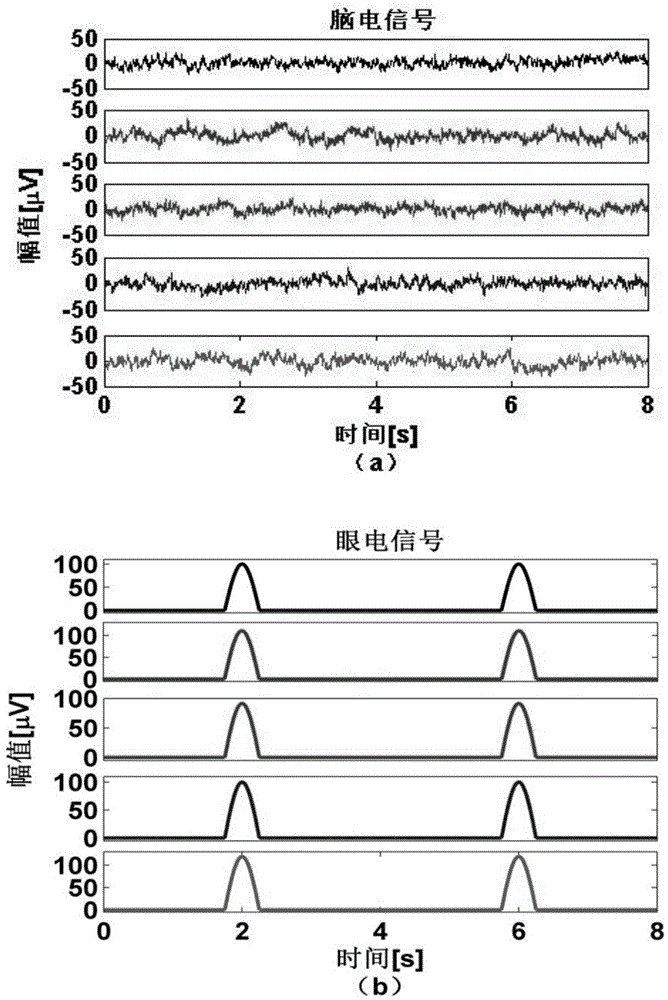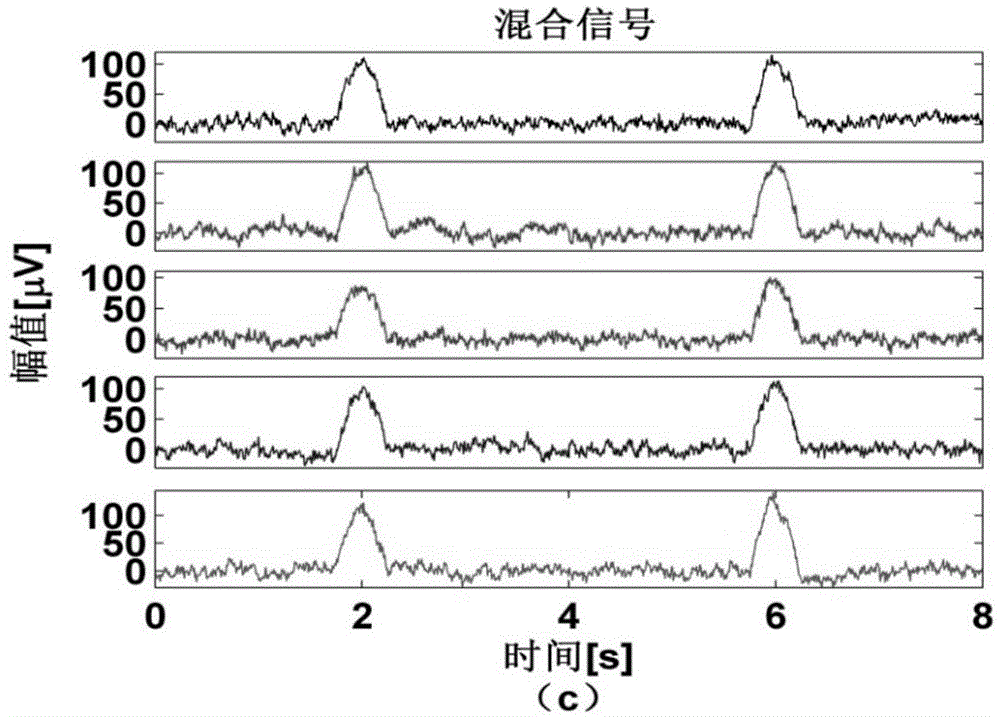Method for removing ocular artifacts in EEG signals
A technology of ophthalmic artifact and EEG signal, applied in medical science, sensor, diagnostic recording/measurement, etc., can solve problems such as loss of EEG information, achieve good denoising effect, improve signal-to-noise ratio, and reduce signal The effect of mean squared error
- Summary
- Abstract
- Description
- Claims
- Application Information
AI Technical Summary
Problems solved by technology
Method used
Image
Examples
Embodiment Construction
[0018] The present invention is described in detail below in conjunction with accompanying drawing.
[0019] refer to figure 1 , a method for removing electrooculometric artifacts in EEG signals, comprising the following steps:
[0020] Step 1. Perform MEMD processing on the EEG signal X(t) containing oculoelectric artifacts. Compared with the empirical mode decomposition (empirical mode decomposition, EMD) method, MEMD can simultaneously process multi-channel EEG signals, which can Make the signals of all channels in each MIMF produced be in the same frequency band, so as to carry out subsequent processing in the same frequency band, set the EEG signal X(t)=[x 1 (t),x 2 (t),...,x n (t)] T , where n represents the number of channels of the EEG signal, t represents the time, T represents the transposition of the matrix, and the EEG signal is decomposed by MEMD to generate m MIMFs, namely where each MIMF i They are all n-channel signals, and the signals of each channel ar...
PUM
 Login to View More
Login to View More Abstract
Description
Claims
Application Information
 Login to View More
Login to View More - Generate Ideas
- Intellectual Property
- Life Sciences
- Materials
- Tech Scout
- Unparalleled Data Quality
- Higher Quality Content
- 60% Fewer Hallucinations
Browse by: Latest US Patents, China's latest patents, Technical Efficacy Thesaurus, Application Domain, Technology Topic, Popular Technical Reports.
© 2025 PatSnap. All rights reserved.Legal|Privacy policy|Modern Slavery Act Transparency Statement|Sitemap|About US| Contact US: help@patsnap.com



